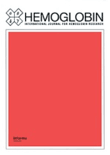
HEMOGLOBIN
Scope & Guideline
Illuminating the science of hemoglobin and health.
Introduction
Aims and Scopes
- Genetic and Molecular Characterization of Hemoglobin Variants:
The journal publishes studies that explore the genetic basis of various hemoglobinopathies, including sickle cell disease and thalassemia, focusing on novel mutations and their implications for disease phenotype. - Clinical Management and Treatment Approaches:
Research on clinical practices, treatment efficacy, and management strategies for patients with hemoglobin disorders is a key focus, including studies on iron chelation therapy, hydroxyurea, and stem cell transplantation. - Public Health and Screening Initiatives:
The journal emphasizes public health strategies for screening and managing hemoglobin disorders, particularly in high-prevalence regions, aiming to reduce the burden of these diseases through early detection. - Innovative Therapeutic Strategies:
It highlights advancements in gene therapy, targeted treatments, and novel drug development aimed at improving patient outcomes for those suffering from hemoglobinopathies. - Epidemiological Studies and Risk Factors:
The journal frequently publishes epidemiological research that assesses the prevalence, risk factors, and comorbidities associated with hemoglobin disorders across different populations.
Trending and Emerging
- Gene Therapy and Precision Medicine:
There is a notable increase in studies focusing on gene therapy as a treatment for hemoglobin disorders, highlighting its potential to address the underlying genetic causes of diseases like sickle cell anemia and thalassemia. - Utilization of Next-Generation Sequencing:
The application of next-generation sequencing techniques to identify novel mutations and understand the genetic basis of hemoglobinopathies is becoming increasingly prominent in recent studies. - Impact of COVID-19 on Hemoglobin Disorders:
Research exploring the effects of COVID-19 on patients with hemoglobin disorders, including changes in disease management and outcomes, is an emerging area of interest. - Quality of Life and Psychosocial Factors:
There is a growing emphasis on studies that assess the quality of life and psychosocial factors affecting patients with hemoglobinopathies, reflecting a broader understanding of patient care. - Novel Therapeutic Agents and Combination Therapies:
Research into new therapeutic agents and combination treatments, particularly focusing on improving outcomes for patients with severe forms of hemoglobin diseases, is gaining momentum.
Declining or Waning
- Historical Perspectives on Thalassemia:
Research focusing on historical accounts or retrospective studies of thalassemia has seen a decline, possibly due to a shift towards more contemporary clinical trials and genetic studies. - Basic Hematological Studies:
Papers that primarily report basic hematological parameters without a direct link to clinical outcomes or genetic insights seem to be less frequent, as the field moves towards more applied research. - Global Comparisons of Thalassemia Management:
While still relevant, comparative studies between different countries regarding thalassemia management strategies have become less common, likely as institutions focus more on localized and personalized medicine approaches. - Older Diagnostic Techniques:
The use of older diagnostic methods, such as simple electrophoresis without advanced sequencing, appears to be waning as new technologies like next-generation sequencing gain prominence. - General Reviews without Novel Insights:
The publication of general reviews that do not provide novel insights or applications related to hemoglobinopathies is declining, as the journal favors studies that contribute new knowledge or advancements in treatment.
Similar Journals
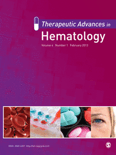
Therapeutic Advances in Hematology
Transforming research into impactful therapies.Therapeutic Advances in Hematology is a prestigious, peer-reviewed journal dedicated to advancing the field of hematology through innovative research and clinical studies. Published by SAGE Publications Ltd, this journal has become a vital resource for hematology professionals and researchers since its inception in 2010. With its impactful Q1 ranking in Hematology and a Scopus rank of 62 out of 137, it firmly establishes itself as a leader in disseminating significant findings and therapeutic approaches. The journal has been committed to open access since 2019, ensuring that its cutting-edge research is readily available to the global scientific community. Covering a broad scope of topics within hematology, Therapeutic Advances in Hematology is an essential platform for those seeking to enhance their understanding and implementation of therapeutic practices in hematological conditions. The journal embraces submissions from both clinical and laboratory perspectives, fostering collaboration and dialogue among researchers, clinicians, and students alike.

JOURNAL OF GENE MEDICINE
Empowering the Next Generation of Molecular MedicineThe Journal of Gene Medicine, published by Wiley, stands as a pivotal resource in the field of gene therapy and molecular medicine, with a rich history of dissemination of impactful research since its inception in 1998. With an ISSN of 1099-498X and an E-ISSN of 1521-2254, this esteemed journal plays a crucial role in advancing our understanding of genetics and drug discovery, reflected in its impressive 2023 Scopus rankings where it holds a Q2 classification in Drug Discovery and Q3 in several genetics-related categories. The journal aims to facilitate the exchange of high-quality research findings that bridge the gap between laboratory and clinical applications, making it an essential platform for researchers, academics, and healthcare professionals committed to the forefront of genetic innovation. Although it does not currently offer open access options, its reputation for rigorous peer review ensures that all published work meets the highest academic standards, providing a reliable reference for scientific inquiry in the United States and beyond. As the field rapidly evolves, the Journal of Gene Medicine remains at the helm, guiding future discoveries with its influential publications and comprehensive insights.
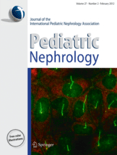
PEDIATRIC NEPHROLOGY
Innovating treatments to enhance the lives of young patients.Pediatric Nephrology, published by Springer, is a leading international journal dedicated to advancing the field of pediatric nephrology and enhancing the health of children with renal disorders. With its ISSN 0931-041X and E-ISSN 1432-198X, this esteemed journal has been in circulation since 1987 and has established itself as a vital resource for researchers and clinicians alike. Featuring a robust impact factor and categorized in Q1 for Pediatrics, Perinatology and Child Health, and Q2 for Nephrology, Pediatric Nephrology stands at the forefront of medical literature, reflecting its commitment to disseminating high-quality research. The journal is particularly noted for its comprehensive scope, encompassing clinical studies, innovative treatments, and cutting-edge research findings that shape pediatric kidney care. Located in Germany and reaching a global audience, this journal not only supports the academic community but also plays a crucial role in improving health outcomes for children worldwide. Access to its valuable content is essential for any practitioner or researcher invested in the evolving landscape of pediatric medicine.

CANCER GENE THERAPY
Advancing the Frontier of Cancer TreatmentCancer Gene Therapy, published by SpringerNature, stands at the forefront of research in the fields of cancer research, molecular biology, and molecular medicine. With a robust impact factor reflecting its significant influence—ranking in the Q2 category for cancer research and Q1 for both molecular biology and molecular medicine—it serves as an essential resource for scholars and practitioners alike. Since its inception in 1994, the journal has dedicated itself to advancing the understanding and therapeutic application of genetic innovations in oncology. Notably, it holds distinguished Scopus ranks, placing it among the top tier journals in its categories, underscoring its importance to the scientific community. While open access options are not available, the compelling research published here offers invaluable insights into the latest advancements and strategies in cancer therapy. Engaging with *Cancer Gene Therapy* not only keeps professionals informed but also inspires future innovations in the quest for effective cancer treatments.

Turk Onkoloji Dergisi-Turkish Journal of Oncology
Shaping the future of oncology with dedicated research and expertise.Turk Onkoloji Dergisi - Turkish Journal of Oncology, published by KARE PUBL, serves as a vital platform in the field of oncology, specifically catering to the Turkish-speaking research community and contributing to global discourse. With an ISSN of 1300-7467, this journal, which has been in circulation since 2007 and continues until 2024, recognizes the importance of advancing medical knowledge in cancer research through rigorous peer-reviewed articles. Although currently positioned in the Q4 category of oncology journals with a Scopus rank of #344 out of 404, the journal is dedicated to fostering significant research insights and innovative perspectives on cancer treatment and prevention. While it does not currently offer open access, its content is essential for professionals, researchers, and students aiming to enhance their understanding of oncology developments in Turkey and beyond. The Turkish Journal of Oncology not only aspires to improve the quality of cancer care but also strives to enhance collaboration among researchers, thereby influencing future oncology practices.
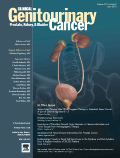
Clinical Genitourinary Cancer
Leading the charge in urological research excellence.Clinical Genitourinary Cancer, published by CIG MEDIA GROUP, LP, is a leading journal in the fields of Oncology and Urology, with an impressive impact reflected in its quartile rankings (Q2 in Oncology and Q1 in Urology for 2023) and strong Scopus rankings (22nd in Urology and 162nd in Oncology). The journal aims to innovate and inspire new research in genitourinary malignancies, providing a platform for the latest findings in diagnosis, treatment, and patient management. With its commitment to high-quality publications since its establishment in 2005, Clinical Genitourinary Cancer serves a crucial role in advancing the understanding of these complex conditions and enhancing clinical practices. Researchers, professionals, and students in the medical community are encouraged to engage with this essential resource, which facilitates open access to pioneering studies that drive the field forward.
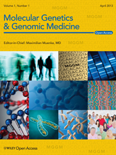
Molecular Genetics & Genomic Medicine
Exploring innovations in genetics and healthcare.Molecular Genetics & Genomic Medicine, published by WILEY, is an esteemed and open-access journal that has been a prominent source of knowledge in the fields of genetics and molecular biology since its establishment in 2013. With an ISSN of 2324-9269, it aims to provide a platform for the dissemination of novel findings and innovative research that pushes the boundaries of genomics and its clinical applications. The journal holds a Q3 categorization in Genetics, Clinical Genetics, and Molecular Biology, reflecting its growing influence in these disciplines, as evidenced by its Scopus rankings. Researchers, professionals, and students alike will find valuable insights and advancements in genomic medicine, making this journal an essential resource for those dedicated to the understanding and application of genetic and molecular research in healthcare. Located at 111 River St, Hoboken, NJ, Molecular Genetics & Genomic Medicine continues to foster a global dialogue within the scientific community, ensuring accessible knowledge for all.
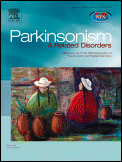
PARKINSONISM & RELATED DISORDERS
Transforming insights into actionable solutions.PARKINSONISM & RELATED DISORDERS, published by Elsevier Science Ltd, is a prominent peer-reviewed journal dedicated to advancing the understanding of Parkinson's disease and related neurodegenerative disorders. With an impact factor placing it in the Q2 category across multiple fields including Geriatrics and Gerontology and Neurology for 2023, this journal serves as a crucial platform for researchers, healthcare professionals, and students alike. Covering an array of topics from clinical trials to innovative therapeutic strategies, it aims to disseminate valuable insights that can improve patient care and outcomes. While it remains a subscription-based journal, its relevance is underscored by its consistent rankings in Scopus, where it ranks 105th in Clinical Neurology and 35th in Geriatrics and Gerontology. Authored by top scholars in the field, PARKINSONISM & RELATED DISORDERS continues to contribute significantly to the body of knowledge surrounding these debilitating conditions, facilitating the exchange of cutting-edge research and fostering collaboration within the scientific community.
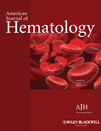
AMERICAN JOURNAL OF HEMATOLOGY
Championing Excellence in Hematology ResearchAmerican Journal of Hematology, published by Wiley, stands as a premier outlet for the dissemination of cutting-edge research in the field of hematology. With a commendable impact factor and ranked #9 out of 137 in the Scopus medicine category, this journal has established a robust presence since its inception in 1976. Operating in the Q1 quartile for hematology, it serves as a crucial resource for researchers, clinicians, and students dedicated to understanding blood disorders and advancing treatment methodologies. While the journal does not currently offer open access options, it remains highly regarded for its rigorous peer-review process and impactful contributions to the scientific community. With coverage extending into 2024, the American Journal of Hematology is committed to fostering innovation and collaboration within the hematological sciences.
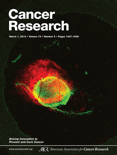
CANCER RESEARCH
Pioneering insights into cancer biology and treatment.Cancer Research, published by the American Association for Cancer Research, is a premier journal in the field of oncology, renowned for its commitment to advancing cancer research since its inception in 1941. With an impressive impact factor reflecting its vital role in the field, this journal consistently ranks in the Q1 quartile for both Cancer Research and Oncology, positioning it among the top 7.5% of journals in these categories. The journal serves as a crucial platform for researchers, professionals, and students to disseminate and gain insights into groundbreaking studies that shape our understanding of cancer biology, prevention, diagnosis, and treatment. While it is not an open-access publication, its rigorous peer-review process ensures that only high-quality research is published, thus maintaining a standard of excellence in the scientific community. With a strong legacy and an ever-expanding influence, Cancer Research continues to be essential for anyone dedicated to the fight against cancer, showcasing cutting-edge research that drives scientific discovery and innovation.